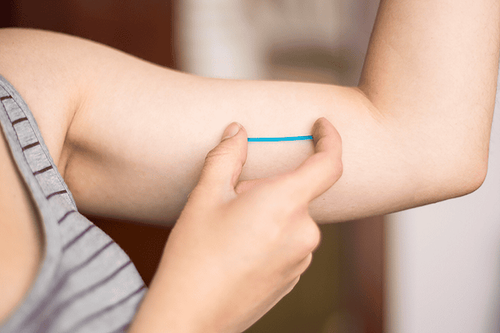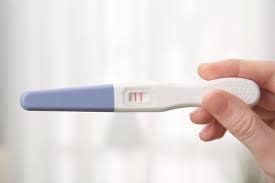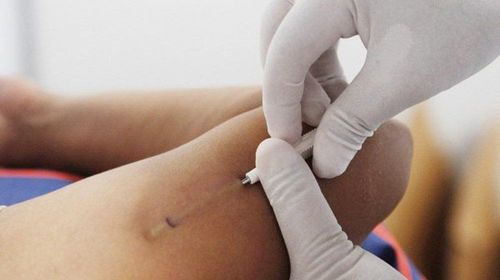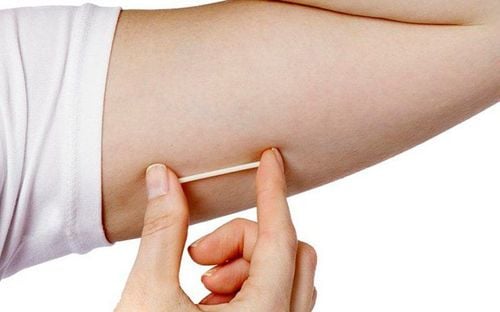This is an automatically translated article.
The article is professionally consulted by Specialist Doctor II Lai Thi Nguyet Hang - Department of Obstetrics and Gynecology - Vinmec Ha Long International General Hospital.
After giving birth, you can get pregnant again very soon if you have sex but do not use birth control. Some women can even get pregnant before their periods return. Using birth control soon after giving birth helps you avoid unwanted pregnancy.
1. What is Long-Term Reversible Contraception (LARC)?
IUDs and contraceptive implants are long acting reversible (LARC) methods of contraception. Both of these methods are very safe and effective at preventing pregnancy. They can be used for many years, and you can stop using them whenever you want. Using an IUD and an implant also won't affect your ability to get pregnant in the future.
2. Why are long-term reversible contraception (LARC) the right choice for mothers who have just given birth?
It's very convenient to use one of these remedies before you go home from the hospital. The IUD or implant can be inserted while you are still in the delivery room or in the days following delivery before you leave the hospital. Taking one of these measures before you leave the hospital also means you don't need to go to the hospital again for an IUD or implant.
3. How effective are long-term reversible contraceptives (LARCs)?
During the first year of use, less than 1 in 100 women using an IUD or implant becomes pregnant. We have the following comparison example: 9 out of 100 women will get pregnant within the first year of using oral contraceptives, and 18 out of 100 women using male condoms will become pregnant within first year.4. What is an IUD?
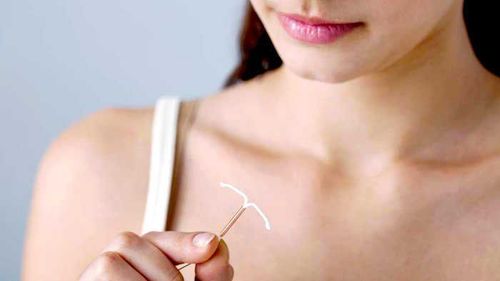
The IUD is a safe and effective method of contraception with a T-shaped flexible plastic rod that is inserted and held in the uterine cavity. There are two types of IUDs:
Hormonal IUDs release the hormone progestin into the uterus. There are many brands of hormonal IUDs with different durations of use. IUDs can be licensed for 3-5 years depending on the brand. The copper IUD releases copper ions into the uterus, is hormone-free and lasts up to 10 years. 4.1. How does the IUD work? The IUD mainly works by preventing sperm from fertilizing an egg. The hormone progestin in the IUD thickens the cervical mucus. This thickened mucus prevents sperm from entering the uterus and dating an egg. The hormone progestin also thins the lining of the uterus.
Copper in the copper IUD interferes with sperm movement. When sperm are inactive, it is difficult for them to swim into the uterus and reach an egg.
4.2. What are the benefits of using an IUD? The IUD can be inserted within 10 minutes of a vaginal or cesarean delivery. The IUD has the following benefits:
If you want to continue your pregnancy or you just want to stop using it, your gynaecologist can help you remove it at any time. Once the IUD is in place, you don't need to use any more birth control. No one will know you are using birth control. It does not interfere with sexual activity and daily activities. There are only certain medical problems that prevent you from using this method, most teenage girls and adults can have an IUD. After a period of use, the hormonal IUD can help reduce menstrual pain and menstrual bleeding. IUDs cannot protect you against STIs. Always use a latex or polyurethane condom when you have vaginal, oral or anal sex to reduce your risk of STIs.
4.3. After vaginal birth, how is the IUD placed? If you've had a vaginal birth, your gynecologist will place the IUD in your uterus after the placenta has been ejected. The IUD will be guided into the uterus, through the vagina and cervix. The IUD has a cord made of thin plastic thread, so it's easier for your doctor to remove when you're ready to stop using it.
After the ring is inserted, the cords are clipped so that they fit just enough through your cervix into your vagina. This cord does not affect you. In rare cases, your partner can feel it during sex. If you're worried, your therapist will be able to help you cut the cord short.
4.4. So after cesarean section, how is the IUD placed? If you have just had a cesarean section, the placenta will be removed from the uterus. At this point, the IUD will be placed in the uterus before the doctor closes the incision. The ring will be placed so that it fits the cervix and can enter the vagina.
4.5. Is it safe to put an IUD right after giving birth? Most women can get an IUD inserted after giving birth, but some shouldn't, including with signs of infection or serious bleeding.
4.6. What are the possible side effects of the ring? When you have an IUD inserted, changes in your menstrual blood are normal and not harmful. With the copper IUD, menstrual pain and bleeding may increase during the first few months of use. You can take over-the-counter pain relievers to relieve pain and bleeding.
Hormonal IUDs can cause continuous menstrual bleeding, bleeding for more days or more bleeding in the first few months. Over time, the amount of bleeding and the number of menstrual days usually decrease. Dysmenorrhea often also subsides. In some cases, menstruation stops altogether. Some women also have other side effects including headaches, nausea, breast tenderness, and mood swings.
4.7. What are the possible risks of having the ring inserted? There are very few serious complications with IUD insertion right after birth. Possible problems include:
There are a small number of women where the IUD can come out of the uterus and into the vagina. This risk is slightly higher for women who choose to have an IUD inserted right after giving birth. It's not harmful to the user, but if the IUD isn't in place, you could get pregnant. You should use other birth control methods until you can see your doctor. You may have a new IUD inserted. It is very rare to get pregnant while a woman is having an IUD. In the rare cases where a woman becomes pregnant even though the ring is still in place, the risk is high that it is an ectopic pregnancy. The IUD can puncture the uterine wall during insertion, which is very rare and occurs in only 1 in 1000 IUD insertions.
5. What is the contraceptive implant?
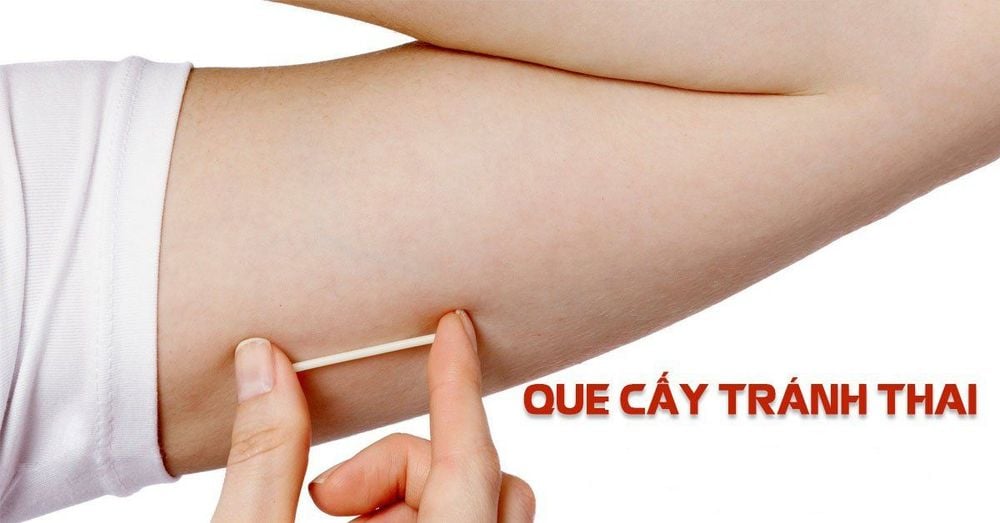
5.1. How does the contraceptive implant work? When you are using the implant, the hormone progestin prevents pregnancy mainly by stopping ovulation. The hormone progestin in the implant thickens cervical mucus, preventing sperm from entering the uterus and reaching an egg. Progestin also thins the lining of the uterus.
5.2. What are the benefits of the contraceptive implant? The contraceptive implant has the following benefits:
If you want to get pregnant or want to stop using it, you can ask your doctor to remove the implant at any time. Once the implant is in place, you don't need to use other methods to prevent pregnancy. No one will know you are using birth control. The subcutaneous implant cannot be seen, can only be felt. It does not interfere with sex and daily activities. There are only certain medical problems that prevent you from using this method, most teenage girls and adults can have an IUD. The contraceptive implant can help relieve menstrual pain. IUDs cannot protect you against STIs. Always use a latex or polyurethane condom when you have vaginal, oral or anal sex to reduce your risk of STIs.
5.3. How is the implant placed? The implant can be placed right in the delivery room and anytime before you leave the hospital. Your obstetrician and gynecologist will help you implant the rod under your arm. The doctor will inject local anesthetic into the inner side of the arm. The implant is placed just under the skin with a special instrument. This procedure only takes a few minutes.
5.4. Possible side effects of the implant? The implant can cause bleeding to change in the cycle. The most common change is unpredictable bleeding. Cycles may decrease in frequency or may stop altogether. But in some cases, the cycle appears thicker and longer. Some other side effects include indigestion, headaches, breast tenderness, weight gain, and acne breakouts.
5.5. What are the possible risks of using the contraceptive implant? Possible risks of using an implant include:
Problems with the implant are rare but can cause pain, light bleeding, bruising, infection or being misplaced. Although very rare, if a woman becomes pregnant after the implant, the risk of an ectopic pregnancy is slightly increased. The implant will be removed when the user is pregnant.
6. Can I use long-acting reversible birth control while breastfeeding?
Of course it is possible! Long-acting reversible birth control is safe while breastfeeding.Please dial HOTLINE for more information or register for an appointment HERE. Download MyVinmec app to make appointments faster and to manage your bookings easily.
References: Acog.org





